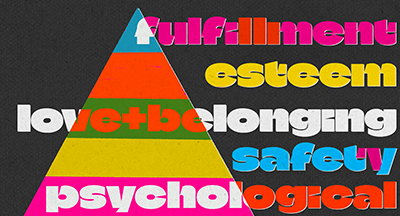
In recent years, authenticity has become a buzzword of sorts. The term “authentic” is used to describe everything from jewelry, artifacts, and even the food at your local ethnic restaurant.
Oh, and communication. Can authenticity really make or break your communication efforts? As it turns out, the answer is a resounding “yes”, and social media is a prime avenue with which K-12 leaders can pursue it.
First, an observation: it seems the term “authentic” is often used in scenarios where the origin or intention of something is typically questioned. For instance, is the diamond ring you’re buying actually a diamond? Was the locket at the museum actually owned by a 17th century queen?
Does the communication coming from a K-12 administrator actually represent what they think and feel?
Right about now, you’re probably thinking of the many PR standards that you (and other leaders within school districts) have to uphold. “Obviously we can’t be 100% genuine with what we say. We need to be professional and diplomatic and straightforward. Right?” Well, yes, but these rules are more flexible than you might think, and that wiggle room is precisely where the magic happens!
Authenticity: Scary but Necessary
For K-12 administrators, authenticity on social media (and in the workplace) can seem like a double-edged sword. On one side, of course you want to be respectful and professional. Your reputation and career depend on it, after all. On the other hand, it’s good to show energy. It’s good to show emotion. And it’s good to show personality. These things convey your passion for what you do and help ignite a strong school culture. There’s no doubt about it—people want to know their leaders care!So, how can you shout authenticity from the rooftops? Boldly take to social media with a refreshing tone that’s sure to turn virtual heads and capture the attention of all who come across your content in cyberspace. Sounds pretty cool, right? Let’s dive in.
Adding Authenticity to K-12 Leaders’ Social Media
Before beginning, take stock of your current social media communication style. Are you too stiff and dull, or too chaotic and unrefined? Maybe a little bit of both? Whether you post to your professional LinkedIn account or create content for your district’s Facebook page, the goal is to communicate in a way that’s both professional and genuine, and—X marks the spot!—here lies the treasure trove of social media success, otherwise known as ✨ authenticity✨.To begin, a few key distinctions need to be made. “Professional” (think eloquent, capable, and respectful) does not equal “corporate” (stiff, rigid, and no-nonsense). You can communicate professionally while still weaving your own voice and personality into your message. Think of it this way: you’re a person, not a school. You can be conversational, you can show you care, and you can let your personality shine through—doing so will only increase your rapport with faculty, staff, students, families, and the community.
Another important distinction to consider is the definition of authenticity itself. If you’re hesitant to bring authenticity to your social media pages, it’s probably because you associate this term with words like “rough," “rugged," and “unrefined.” In actuality, this couldn’t be further from the truth. The dictionary defines authentic as “being of undisputed origin.” It means to be genuine, bona fide, and real. Now, THAT sounds like some qualities we’d all like to have more of in our social media feeds!
A few pro tips to keep in mind:
1. Add emotion to your content, not content to your emotion.Remember this during the tough times when you’re feeling stressed or upset. Lead with a level head and let your passion follow. As the saying goes, don’t make a decision when you’re angry. Likewise, wait to communicate about a topic until your emotions have calmed down and your professionalism can take the spotlight.
2. Would you be interested in your own content?
As a quick self-evaluation, consider your content through the lens of a viewer. If another K-12 peer were posting content similar to yours, would you be interested in it? If not, it’s time to consider another angle while staying true to your voice.
Why does an Authentic Voice Resonate in K-12 Education?
Definitions aside, it’s important to focus on the why. Why is it so important to curate authentic communication, and how will it impact your audience?People connect with other people. It’s human emotion—not fancy vocabulary or a flashy visual—that drives individuals to build relationships and unite under common goals. Take radio hosts, for example. Many radio entertainers showcase authenticity on the airwaves, and their magic mix of personality and professionalism makes them successful. You get the feeling that you could tune in all day and never get bored. Plus, it’s common for regular listeners to regard radio hosts as friends because of it! Read more on the impactful tactics of radio talk (and learn how you can incorporate them into your communication strategy).
Before you head off to reinvigorate your social media communication style, here’s a bit of food for thought: people won’t always remember the words you say, but they will remember how those words made them feel. Bringing authenticity into your communication is key to fostering greater connection, engagement, and buy-in from fellow K-12 professionals and families alike.
Be professional, not corporate. Be authentic, not unrefined. That’s how you walk the communications line.
Follow-up resource: Authenticity helps school culture, too
Want to up the authenticity ante? Read this article for tips on building an authentic school culture.WHAT'S NEXT FOR YOUR EDTECH? The right combo of tools & support retains staff and serves students better. We'd love to help. Visit skyward.com/get-started to learn more.

|
Lexi Beecher Edtech Thought Leader |




